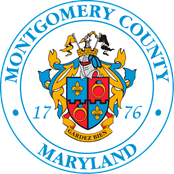See more in Maps
Location of historic sites in Montgomery County Maryland
| Name | Address | Description |
|---|---|---|
| Seneca Schoolhouse | 16800 River Road, Poolesville, MD 20837 | Maryland, Virginia and Washington area children (and of course visiting friends) can enjoy a “back in time” experience of visiting and attending classes at a one room school – without a computer.A carefully researched 19th century school day program is taught by a trained and costumed teacher. The session is given from 10 to 2 o’clock with time out for lunch and outdoor games. This field trip is designed for fourth grade students as local history, but can be tailored to any age, including mixed-age groups. We’re confident that scholars of all ages will find the 19th century time travel appealing, informative and fun! |
| Sandy Spring Museum | 17901 Bentley Road Sandy Spring, MD 20860 | Sandy Spring has a unique and celebrated history that we want to share with you. From its start as a Quaker community in the early 18th century, to stories of agricultural innovation, women’s suffrage, and progressive education, to establishing one of the largest land-owning African American communities in Maryland, to current residents who can trace their lineage back almost 300 years, the museum has many stories of local, state, and national interest. The nearly 300-year history of Sandy Spring is captured and preserved in a vast array of photographs, documents, and artifacts. |
| Great Falls Tavern | 11710 MacArthur Blvd., Potomac, MD 20854 | The Great Falls of the Potomac have drawn people to the river's shore for centuries. To Native Americans it was a gathering place, to George Washington it was an impediment to navigation, to thousands of visitors every year it is an awe-inspiring site. Tourists have been drawn to the Great Falls of the Potomac long before there was a canal. The Great Falls Tavern carries on a long tradition of hospitality for visitors to the C&O Canal. Soon after the canal's ground breaking in 1828 construction began on the original lockhouse. In response to travelers' requests for shelter and a meal, the locktender here at Great Falls, W.W. Fenlon, asked the Canal Company to build the three-story north wing for a hotel. Proposing himself as innkeeper but adding, "Mrs. Felon is better calculated for Land Ladie," he wrote. The hotel opened for business in 1831. |
| Red Brick Courthouse | 29 Courthouse Square Rockville, Maryland | For most of Montgomery County's history, a single building, familiarly known as "The Courthouse," served all functions of local government. The Red Brick Courthouse is the County's third on this site, constructed in 1891 at a cost of $50,000.The Red Brick Courthouse reflects the image and aspirations of rural Montgomery County in 1891. Roads were crude, daily trains connected county commuters and farmers with the nation's capital, and trolley tracks were planned between Rockville and Georgetown. The county's 27,185 residents visited the "Richardsonian Romanesque" style courthouse as litigants and jurors, to pay taxes, buy dog tags, probate wills, obtain marriage and business licenses, record deeds, speak to County Commissioners, and request law enforcement from the Sheriff. |
| Josiah Henson Site | 11420 Old Georgetown Road North Bethesda, MD 20852 | Josiah Henson Park Site is the former plantation property where Reverend Josiah Henson was enslaved. This park is a historic resource of local, state, national and international significance because of its association with Reverend Henson, whose 1849 autobiography, The Life of Josiah Henson, Formerly a Slave, inspired Harriet Beecher Stowe’s landmark novel, Uncle Tom’s Cabin. The park is currently open only during a limited number of dates each season. All events are free and open to the public. |
| Clara Barton National Historic Site | 5801 Oxford Road Glen Echo, Maryland 20812 | Clara Barton dedicated her life and energies to help others in times of need - both home and abroad, in peacetime as well as during military emergencies. Glen Echo was her home the last 15 years of her life and the structure illustrates her dedication and concern for those less fortunate than herself. |
